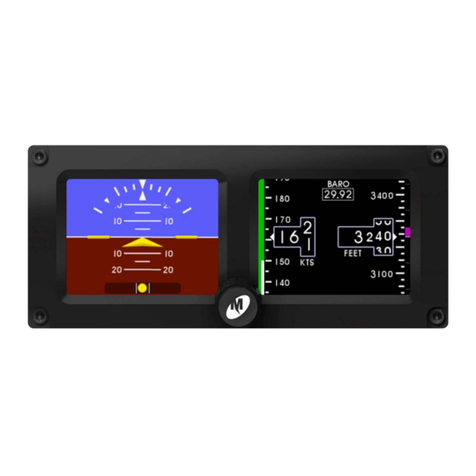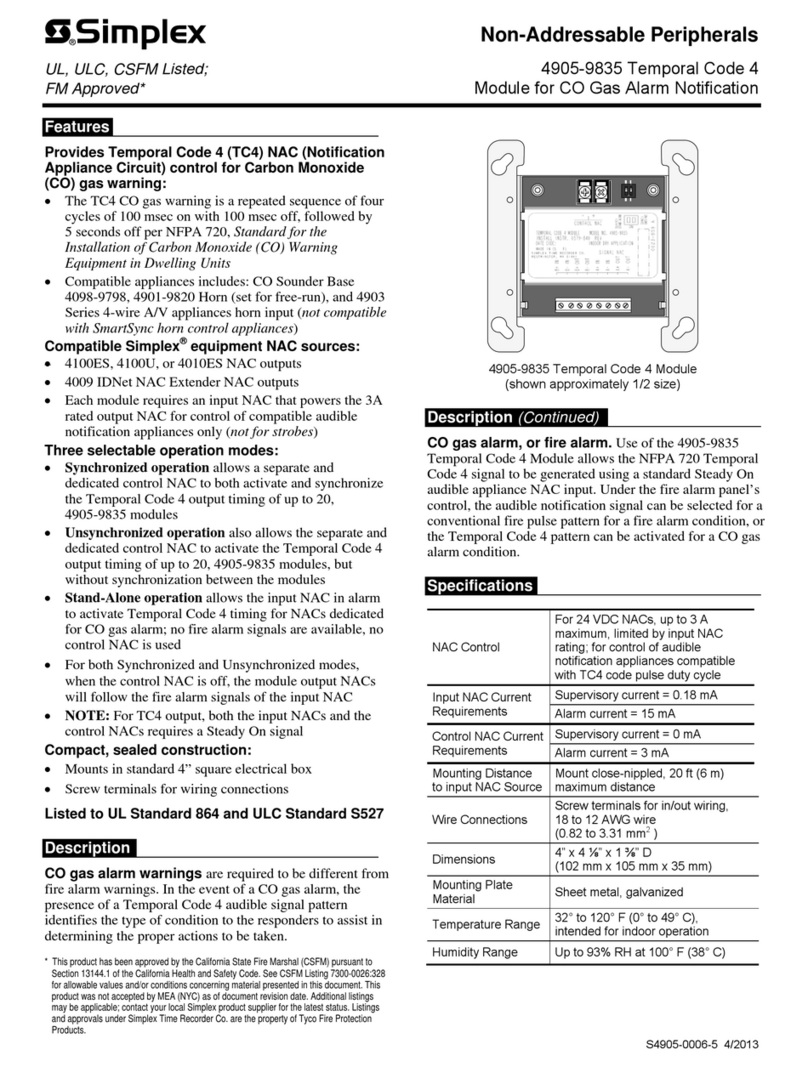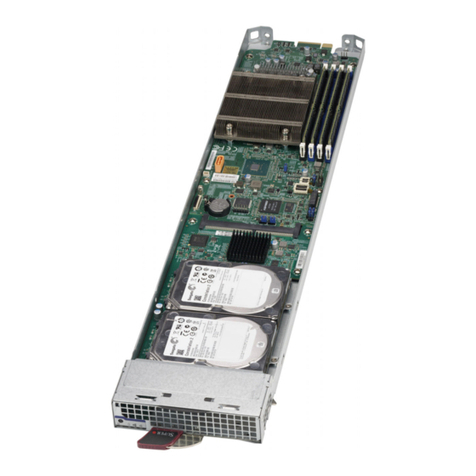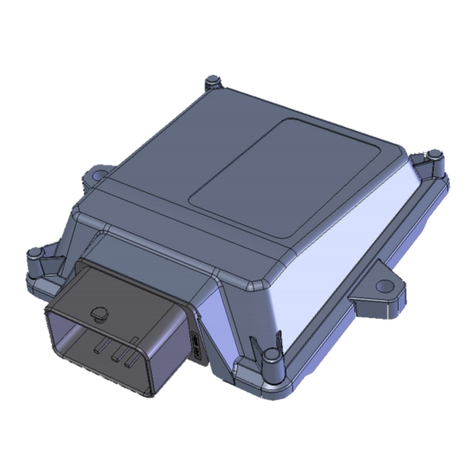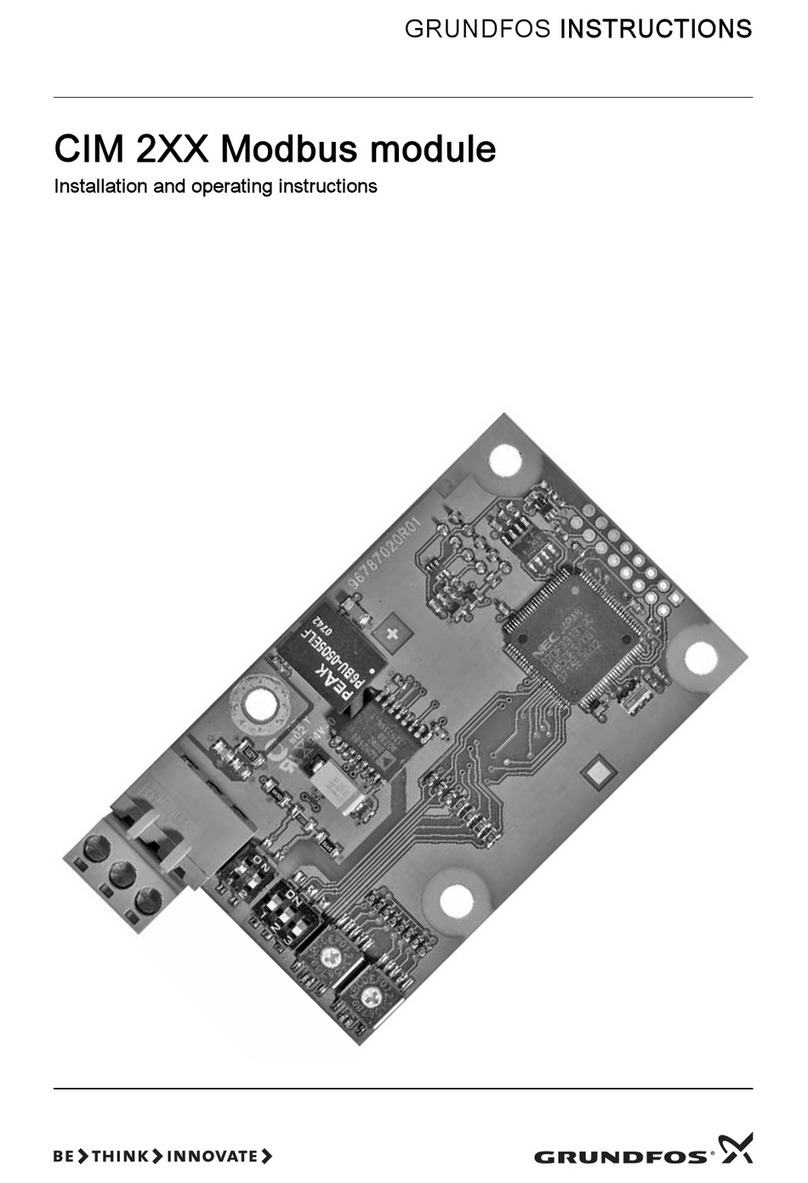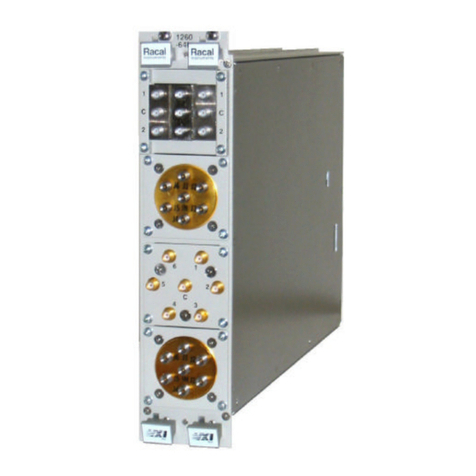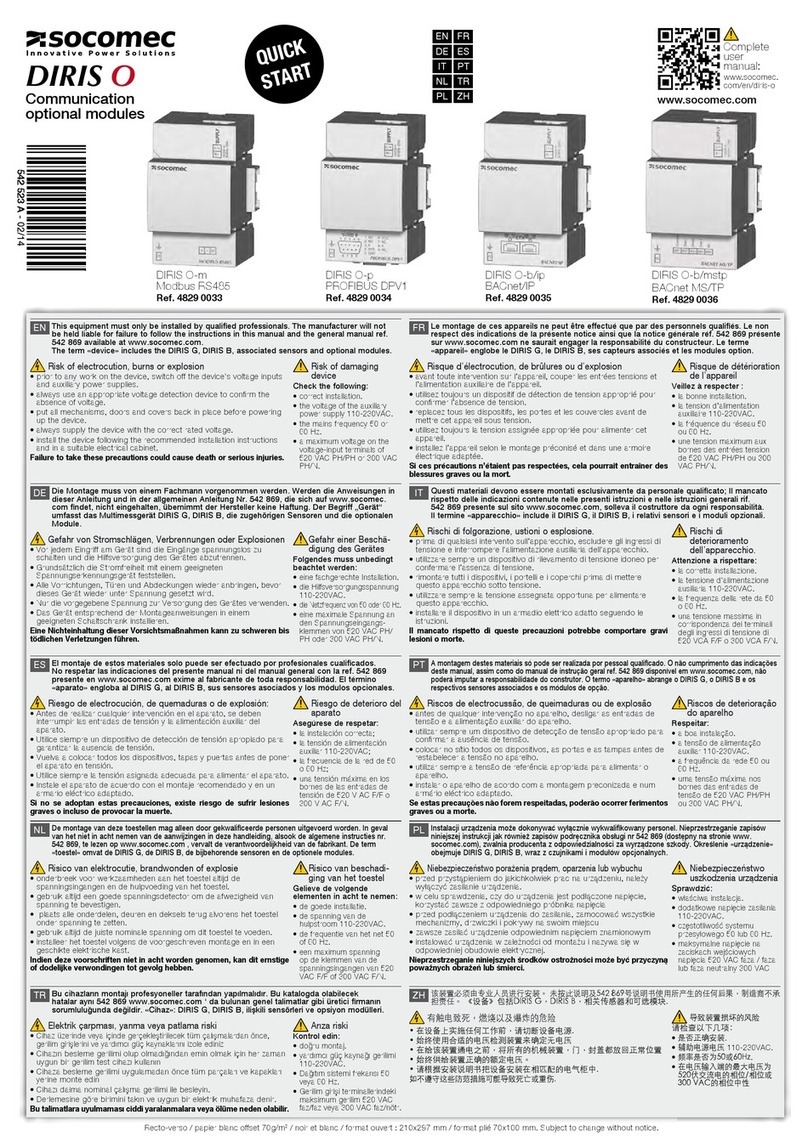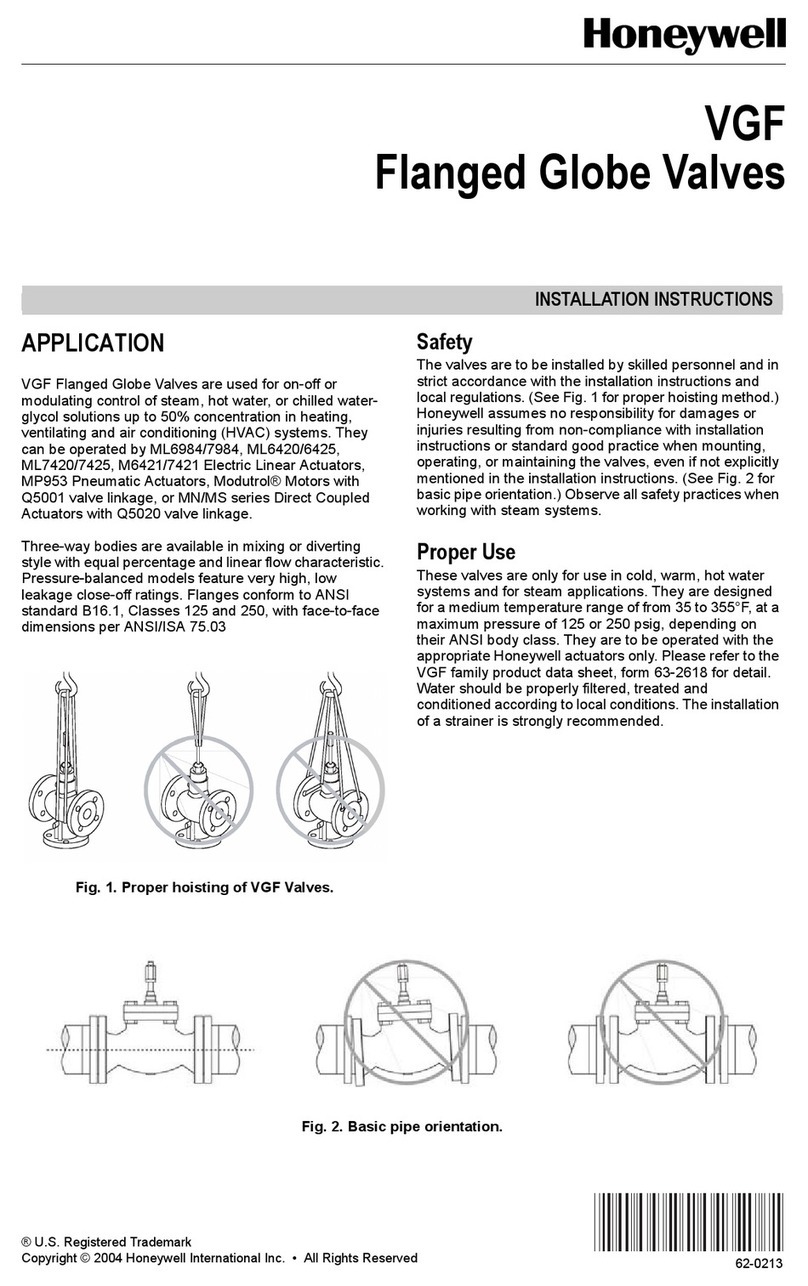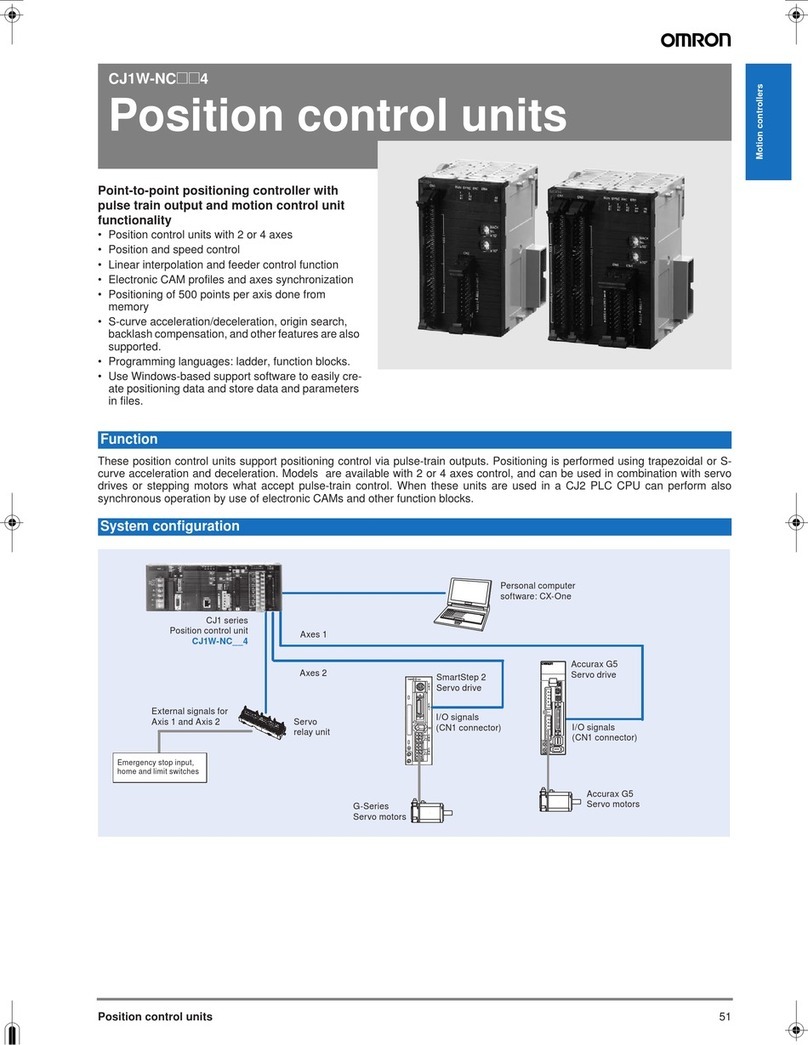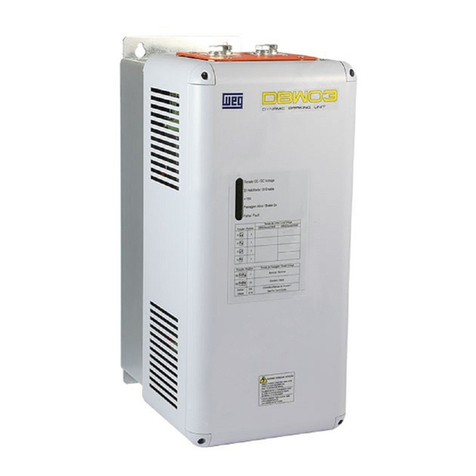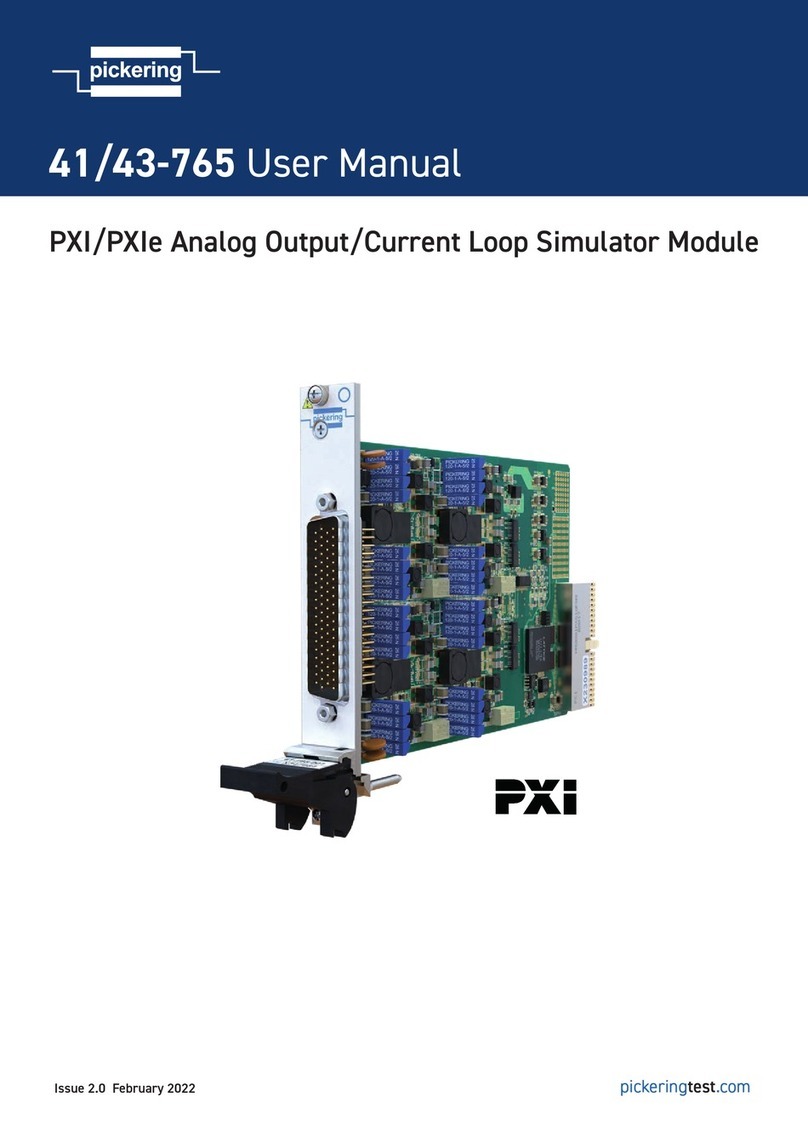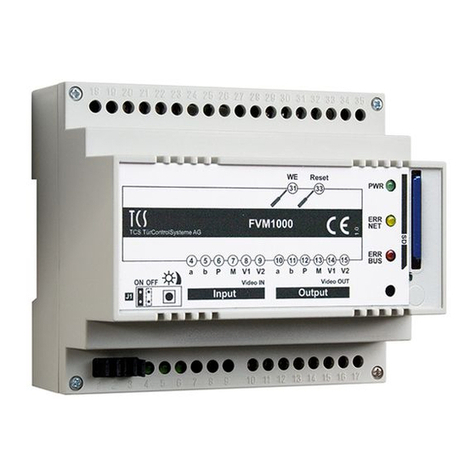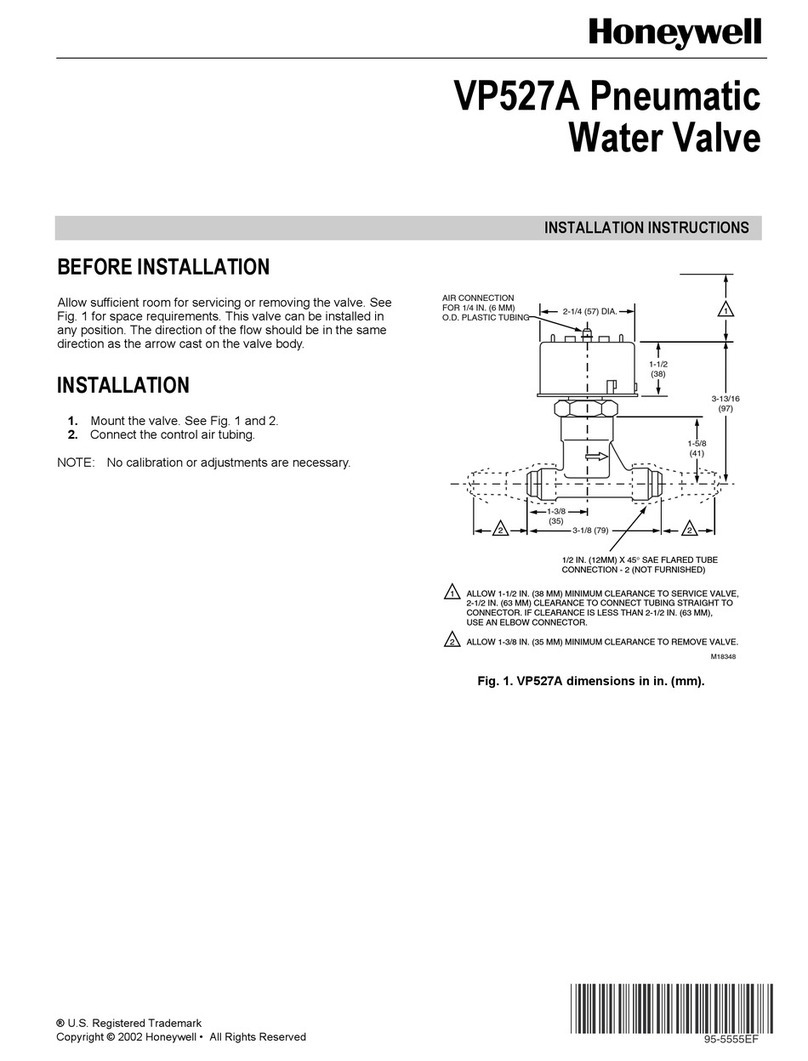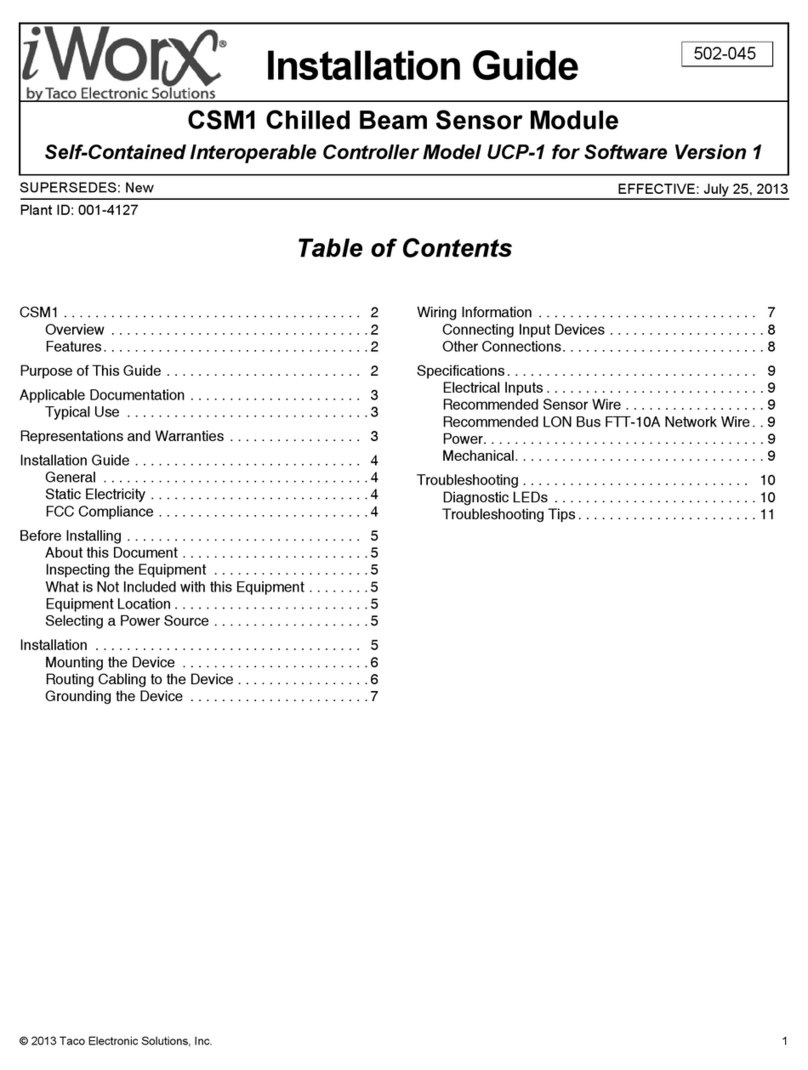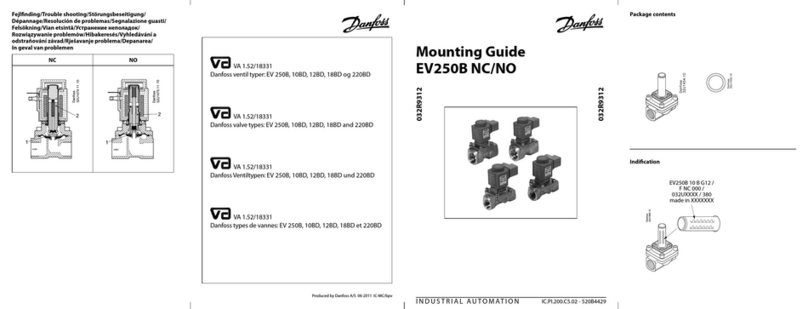Sfere SFR-M Series User manual

SFR-M Series
Low-voltage Harmonic Suppression
Reactive Compensation Module
User’ Manual
JIANGSU SFERE ELECTRIC CO., LTD.

2
Thank you for choosing SFR-M series low voltage harmonic suppression reactive
compensation module. In order to make it convenient for you to purchase and use the meter safely,
correctly and efficiently, please read this manual carefully before using the product, and pay
attention to several points as follows.
CAUTION:
◆Make sure only the qualified technicians perform the installation and maintenance;
◆Before performing wiring operation to the meter make sure the input signal and power
supplies are switched off;
◆The proper voltage detecting device shall always be used to determine there is no voltage
in each part of the meter;
◆The electrical parameters supplied to the meter shall be within the rated range;
The following conditions may result in damages or abnormal operation to the meter:
◆Voltage of auxiliary power supply goes beyond the range
◆Frequency of power distribution system goes beyond the range
◆Input polarity of voltage or current is incorrect
◆Removing or connecting the communication plugs with electricity;
◆Connecting terminal wires without following the requirements.
Please don’t touch the terminals
when the meter is in operation!

3
Menu
1.Introduction................................................................................................................................................4
1.1.Compliance with standards.......................................................................................................4
1.2 Overview........................................................................................................................................... 4
2.Model selection.........................................................................................................................................4
3.Technical parameter................................................................................................................................ 5
4.Installation and wiring..............................................................................................................................6
4.1 Outline dimension............................................................................................................................6
4.2 Installation method.......................................................................................................................... 7
4.3 Accessories
Accessories.......................................................................................................................................7
4.4 Typical wiring.................................................................................................................................... 7
5. Operation.....................................................................................................................................................9
5.1 Using method of buttons on digital display panel...................................................................... 9
5. 2 Enter and exit programming status............................................................................................. 9
6. Panel description and measurement information display................................................................. 11
7. Common problems and solutions......................................................................................................... 15
8.Ordering specification and contact method............................................................................. 16

4
1.Introduction
1.1.Compliance with standards
GB/T 15576-2008 Low voltage reactive power compensation assemblies
GB/T 22582-2008 Power capacitors—Low-voltage power factor correction banks
JB/T 9663-1999 Low-voltage reactive power automatic compensation controller
1.2 Overview
SFR-M series low voltage intelligent power capacitor modules take two △type compensation
capacitors or one Y type compensation capacitor as main body and are highly integrated with
compound switch, microprocessor and other function modules. Due to their modularity structure,
they have such advantages as small volume and easy maintenance. SFR-M series power
capacitor modules are mainly used for reactive power compensation in the fields where harmonics
are not very serious. They are suitable for local compensation, dispersion compensation and
centralized compensation. This series of products adopt double zero-crossing switch technology
to make sure there is no over voltage or high inrush current during capacitor switching so as to
prolong capacitor life and switch life. SFR-M series capacitor modules have many protection
functions such as capacitor internal temperature protection, grid harmonic content protection, over
current protection, over voltage protection and three phase unbalance protection which make
them more reliable. This series of products adopt a using method of building blocks. If many
capacitors are used, one of them will become the master automatically, and others will become
slaves. Then a reactive automatic control system is built. If some of the slaves fail, they will exit
the system automatically without influencing other slaves; if the master fails, it also will exit the
system automatically, and then another new master appears and a new control system is built.
Meanwhile, SFR-M series capacitor modules are integrated with some functions of power meters
which can measure conventional electrical parameters of the power system.
2.Model selection
Reactance rate %
SFR M □□ □
Abbreviation for company name
Rated voltage, Unit V
Value of first group capacitor, Unit kvar
Product design number
Value of second group capacitor, Unit kvar
Power capacitor series
Note: total compensation for rated voltage 480V(P7) or 525V(P14), and separate compensation
for rated voltage 280V(P7) or 300V(P14).

5
Compensation
mode
Capacity
(kvar)
Remarks
Three phase total
compensation
20+20
Two channel
total
compensation
20+10
Two channel
total
compensation
10+10
Two channel
total
compensation
10+5
Two channel
total
compensation
40
Single channel
total
compensation
30
Single channel
total
compensation
20
Single channel
total
compensation
15
Single channel
total
compensation
10
Single channel
total
compensation
Phase separate
compensation
30
20
10
Table 1 Product model list (special specifications can be customized)
3.Technical parameter
Function
Technical parameter
Feature (accuracy)
Measurement
Current
≤0.5 %(within the range 20%~120% of rated
current)
Voltage
≤0.5 %(within the range 50%~120% of rated
voltage)
Power
≤1%
Power factor
±0.01
Switching mode
Zero-crossing switch

6
Compensation
operation
Working voltage
AC 380V±20%,distortion rate≤5%
Max. working current
1.35*In
Switching inrush
current
≤
22
*In
Switching times
100 万次
Host protection
Over voltage
1.2*Un (can be set)
Under voltage
0.8*Un(can be set)
Harmonic exceeding
can be set
Local protection
Over current
can be set
Over temperature
55℃(can be set)
Unbalance
50%(can be set, only for total compensation)
Control setting
Control parameter
Target power factor, switching threshold, delay time
etc.
Peripheral unit
parameters
Current transformer ratio
Network interface
Pluggable data line, internal network protocol.
Mechanical
installation
Outline dimension
280mm×290mm×370(430)mm
Installation dimension
295mm×350(410)mm
Weight
≤ 45kg
Environment
temperature
Working temperature
-25℃~50℃
Storage temperature
-25℃~55℃
Altitude
<2000m
4.Installation and wiring
4.1 Outline dimension
Outline dimension
Length(L)mm
Width (W)mm
Height
(H)mm
Distance
between
fixing poles
mm
Φ6
Total compensation
series
SFR-M-2020-P7(14)
430
280
290
295×410
SFR-M-2010-P7(14)
430
280
290
295×410
SFR-M-1010-P7(14)
430
280
290
295×410
SFR-M-1005-P7(14)
430
280
290
295×410
SFR-M-0505-P7(14)
430
280
290
295×410
SFR-M-40-P7(14)
370(430)
280
290
295×350(410)
SFR-M-30-P7(14)
370(430)
280
290
295×350(410)
SFR-M-20-P7(14)
370(430)
280
290
295×350(410)
SFR-M-15-P7(14)
370(430)
280
290
295×350(410)
SFR-M-10-P7(14)
370(430)
280
290
295×350(410)

7
Separate
compensation series
SFR-M-30-P7(14)
370(430)
280
290
295×350(410)
SFR-M-20-P7(14)
370(430)
280
290
295×350(410)
SFR-M-15-P7(14)
370(430)
280
290
295×350(410)
SFR-M-10-P7(14)
370(430)
280
290
295×350(410)
SFR-M-05-P7(14)
370(430)
280
290
295×350(410)
4.2 Installation method
For good heat radiation, make sure horizontal distance between two modules is not less than
50mm, and vertical distance is enough for using screw driver. Usually three layers of modules can
be installed in ordinary GGD cabinet (800mm*1000mm*2200mm ). One of the three layers
contains three modules, so that three layers contain nine modules.
4.3 Accessories
Accessories
4.3.1 The specification of pressing joints is 16mm2. It is used for 10~1616mm2 lines. Every total
compensation module is equipped with three joints, and every separate compensation module is
equipped with four joints.
4.3.2 Pluggable data line is used to connect modules or module and other accessories for
networking. There are three specifications which are 0.7-meter, 1.0-meter and 2.5-meter.
0.7-meter line is used to connect two adjacent modules on same layer; 1.0-meter line is used to
connect modules on adjacent layers; 2.5-meter line is used to connect controller module.
2.5-meter line is also used to connect host cabinet and auxiliary cabinet in a same system. If
customer needs pluggable data line with other length, please specify when ordering.
4.3.3 Secondary Current Transformer is an optional unit which is used for primary current (5A)
sampling in bus line of incoming cabinet. The transformer is necessary when customer only use
SFR-M series low voltage harmonic suppression reactive compensation module. Usually SFR-M
series modules are defaulted to be equipped with reactive power compensation controller
(WGK-31-203), which make it not necessary to equip secondary current transformers to the
module.
Pressing joint Secondary current transformer Pluggable data line
4.4 Typical wiring
①Compensation module can be used alone. When it is used alone, it should be equipped
with a secondary current transformer for each system. If there is no separate module in a system,
single phase current transformer is suitable, otherwise, please equip three phase current
transformer in that system. Current transformer is connected to Phase B current of incoming
cabinet and any one of the modules in the cabinet. It is suggested to connect the current

8
transformer to the module with smallest number.
②Compensation module also can be equipped with controllers. If there is no separate
compensation module in a system, WGK-31-203-G compensation controller is suitable, otherwise,
please equip WGK-31-203-F compensation controller in that system.
SFR-M series modules are connected with WGK-31-203 compensation controller by
specialized pluggable data line. One WGK-31-203 controller can be connected up to 32 SFR-M
series modules. Controller and capacitor modules can realize automatic networking by adopting
internal protocol. Common System configuration and wiring diagram are shown in following
diagrams.
UA
UB
UC
HL1
HL2
UA
UB
UC
Pluggab le data
line interface
4IA*
5IA
Seconda ry
current
of cabinet
(≤5A)
WGK-31-20□-G
SFR series
(total
compensation)
Controller
GND
Capacitor status indication light(380V)
UC
UB
13
14
UB
Wiring diagram for total compen sation modu le system with controller
1
2
L
N
Power supply
AC/DC80~270V
SFR series
(one total
compensation)
SFR series
(total
compensation)
Capacitor status indication
light(380V)
Pluggab le data
line interface
Pluggab le data
line interface
UA
UB
UC
HL1
HL2 GND
UA
UB
UC
HL1
HL2 GND
UN
UA
UB
UC
4IA*
5IA
11
12
WGK-31-20□-F
13
14
IB*
IB
6
7
IC*
IC
8
9
UNUB
1
2
L
N
UA
UB
UC
UA
UB
UC
UA
UB
UC
UN
UA
UB
UC
UN
HL1
HL2 GND
HL1
HL2
HL1
HL2
HL3
GND GND
Pluggable data
line interface
Pluggable data
line interface
Pluggable data
line interface
SFR series
(total
compensation)
SFR series
(total
compensation)
SFR series
(separate
compensation)
Secondary
current
of cabinet
(≤5A)
Controller
Power supply
AC/DC80~270V
Capacitor status indication
light(380V) Capacitor status indication light(380V)
Wiring diagram for total compensation module and separate
compensation module combined system with controller

9
*
*
UN
UA
UB
UC
UB
UA
UB
UC
UA
UB
UC
HL1
HL2 GND
HL1
HL2 GND
Pluggable data
line interface
SFR series
(total
compensation)
SFR series
(total
compensation)
Capacitor status indication
light(380V)
Wiring diagram for total compensation module and separate
compensation module combined system without controller
Secondary
current
of cabinet
(≤5A)
Secondary
current
transformer
5. Operation
5.1 Using method of buttons on digital display panel
This interface is composed of the following three buttons.
and buttons are used separately for switching menus and changing numbers; +
combined is used for canceling an operation; is used for entering a menu and confirming
an operation.
The method for change data at digital display interface is as follows.
button is used to select a bit which is the flashing one;
button is used to change the numbers from 0 to 9 at selected bit.
5. 2 Enter and exit programming status
5.2.1 Enter programming status
In display interface, press button to enter password authentication interface. User can
press or button to input the password (the user’s password is defaulted as 0001). After
inputting the password, press button to enter programming interface. Note: if the interface
does not change after pressing button, that means the password is wrong.
5.2.2 Exit programming status
After return to first level menu of programming, press + at the same time, and then
SAVE-YES appears. Now there are three options.
(1)Press button to save modified data and exit;
(2)Press + at the same time to stay in programming status;
(3)Press button to change to SAVE-NO, and then press button to exit without
saving modified data.

10
5.3 Programming examples
(1) The following operation process shows and example for system setting.
(2)The following operation process shows and example for setting internal network
address.
Note: there should not be same network addresses in a control system.

11
(3)The following operation process shows an example for module switching parameters (Usually
it is not needed to set these parameters only if there is no controller.)
6. Panel description and measurement information display

12
1. C1 and C2 indication lights show the switching and running status of two capacitor
modules; if Fault indication light is on, that means the power capacitor module is in protection
status.
2. Three-row code segment LCD shows measured electrical information such as present
status of power capacitor module, capacity, temperature and electrical parameters.
3. Dial switch is composed of Test and Work. Test is used to simulate switch in and cut off of
power capacitor module through compensation controller; Work means the capacitor module
working normally.
4. Three buttons are used for switching between display interfaces and programming.
Display information
button is used to switch between different interfaces. The information of each interface is
shown in the following list.
Interfaces
Content
Description
Host-slave
mode, No. and
quantity of
capacitor
modules, total
module quantity
In first row , HoSt shows this
module is the host module; SLAV
shows this module is a slave
module;
In econd row, the number
following CH shows the No. of
module;
In third row, the number
following AL shows the totoal
quantity of modules in network.
Note: if the host is in this interface,
press and buttons together
to realize networking.
Capacity
The left picture shows the
capacity of module.
Temperature
The left picture shows the
temperature of two compensation
modules.

13
The left picture shows the
temperature of separate
compensation module.
Three phase
current
The left picture shows the value
of current in compensation status.
Three phase
voltage
The left picture shows the value
of bus line voltage.
Input current
The left picture shows the
current of incoming cabinet (only
effective in host module).
Active power
The left picture shows the active
power of incoming cabinet (only
effective in host module).

14
Reactive power
The left picture shows the
reactive power of incoming cabinet
(only effective in host module).
Total apparent
power
The left picture shows the total
apparent power of incoming cabinet
(only effective in host module).
Power factor
The left picture shows the power
factor of incoming cabinet (only
effective in host module).
Harmonic
content
The left picture shows the
voltage and current harmonic
content of incoming cabinet (only
effective in host module).
Protection
alarm
Er01:Over voltage protection, return
to normal automatically;
Er 02:Under voltage protection,
return to normal automatically;
Er 03:Over current protection, need
to be reset;
Er 04:Over temperature protection
for first module, return to normal
automatically;
Er 05:Over temperature protection
for second module, return to normal

15
automatically;
Er 06:Three phase unbalance
protection, need to be reset;
Er 07:Harmonic voltage protection
THDu%, return to normal
automatically;
Er 08:Harmonic current protection
THDi%, return to normal
automatically;
Er 09:Internal fault, need to be
reset.
7. Common problems and solutions
7.1 Automatic switch in after power on
The compound switch inside a module is defaulted to be open, but it may become closed
because of vibration in transportation. In this case, user needs to connect the module to grid
which can bare the current of that module to make it reset.
7.2 External indication light on after module power on; External indication light off after module
power off.
First, please confirm the type of module. If the module is total compensation type, the
common end of external indication light should be connected to Ub; if the module is separate
compensation type, the common end of external indication light should be connected to Un.
Second, the connection of external indication light is right. In this case, user needs to check
the phase sequence of wires connected to the module and make it the same with the printed
diagram on module.
Note: It is normal that the external indication light is in false light status.
7.3 Other abnormal situation.
Please contact our technical service department and describe the field situation clearly. Our
technicians will provide solution according to your description. If the problem can not be solved
after communication, we will send technicians to solve the problem at field.
7.4 Switching test
Switching tests are divided into two kinds which are simulation switching test and normal
switching test according to switching effects. The difference between these two kinds of tests is
that in simulation switching test, the capacitor module is not really switched in, so there is no large
current, but in normal switching test, the capacitor module is switched in and there will be large
current. Please select the testing method according to practical situation so as not to burn the wire
or cause accidents.
①Controller simulation switching test
1)Change the dial switch on the capacitor module to Test;
2) Control the switching of capacitor module through compensation controller. Meanwhile the
indication lights will react. If the indication light is on, that means the capacitor module is switched

16
in; if the indication light is off, that means the capacitor module is switched off.
②Controller normal switching test
1) Change the dial switch on the capacitor module to Work;
8.Change the power factor of circuit. Controller will control the real switching of capacitor modules
according to power factor. If the indication light on capacitor module and external indication light
are on, that means the capacitor module is switched in; if the indication light on capacitor module
and external indication light are off, that means the capacitor module is switched off.
8.Ordering specification and contact method
Please write down the model of product in your order. There are default settings for each
capacitor module. If you need other setting, please specify it in your order. The example of order is
as follows,
Model:SFR-MXD-2020/450
Other:External controller WGK-31-203-G
This manual suits for next models
22
Table of contents
